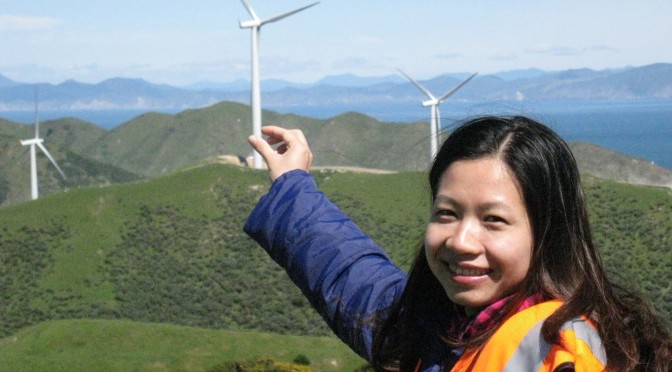The Ministry of Industry and Trade will submit to the government a pilot program to organize international bidding to pick competent developers for wind power projects that have been long delayed, a state official said at a seminar on wind energy in Ho Chi Minh City on Monday.
In the near future, the ministry will study a number of delayed wind power projects in the south-central provinces of Ninh Thuan and Binh Thuan in order to choose capable investors offering the best price for their electricity, said Pham Trong Thuc, director of the New and Renewable Energy Department under the ministry.
The program, if approved by the government, will help accelerate the progress of many wind power projects in Vietnam, Thuc said at the event held to introduce the potential of wind power in Vietnam using German solutions.
The government has also assigned the ministry and relevant state agencies the tasks of reviewing the existing wind power projects and checking the real funds that investors channel into each project to provide a common, reasonable purchase price of electricity generated by those renewable energy projects, Thuc said.
Through the tender, the state will understand the real price of each wind power project to classify the investment rates for those using European and American equipment and technology, and those using the equipment and technology from other countries, he added.
This is the foundation to calculate the level of electricity price support for each project, Thuc explained.
Bui Van Thinh, deputy chairman of the Binh Thuan Wind Power Association, said that the tender to select potential investors is effective in many countries where the state budget is spent on planning, calculating the wind power potential of each area, and clearing the site for wind power development.
However, in Vietnam, the work has been done by investors for a long time, so it is hard to apply foreign models.
Recently, some provincial governments with more wind power potential, such as Ninh Thuan and Binh Thuan, have urged investors to speed up their projects, and threatened to revoke the licenses if they are delayed for too long, Thinh said.
Huge potential to tap
Vietnam has great potential for the development of wind power and solar energy, many experts remarked at the event.
With almost 3,400 kilometers of coastline and an average wind speed of six meters per second, the wind energy potentialities of Vietnam are estimated to reach about 500 to 1,000 kWh per square meters each year.
In Vietnam, the potential for wind power development has been scattered in 22 coastal provinces across the country, including many provinces which have planned the development of wind power until 2020, such as Quang Tri (110 MW), Binh Thuan (700 MW) , Ninh Thuan (220 MW), Soc Trang (200 MW), Ben Tre (150 MW ).
There are 52 other wind power projects in the research processes with a total capacity of 4,252 MW.
It is expected that by 2030 renewable energy will account for six percent of the national electricity output.
According to Thuc from the New and Renewable Energy Department, the ministry has recently submitted the national renewable energy development strategy to the prime minister for consideration and approval, which is expected to be passed by early 2016.
Through the ministry’s research, hydropower sources in Vietnam have been exploited fully, and the country will have to import coal for electricity production in the near future given the current limitations of domestic supply, Thuc said.
Currently, among the total national electricity output annually, thermal power, hydropower, gas-fueled power and oil-fueled power make up about 34 percent, 43 percent, 19 percent, and 4 percent, respectively, he said.
As a result, Vietnam will have to strengthen the development of renewable energy to offset the use of fossil fuels, Thuc added.
At present, as the equipment required for utilizing wind power cannot be produced domestically, a high cost of investment is incurred, including expenses for transporting equipment from abroad which account for 15-17 percent of the total expenditures.
Another major barrier for wind power investors is low purchase price, which currently sits at 7.8 cents/kWh and 9.8 cents/kWh for electricity generated by on-shore and offshore projects, respectively.



